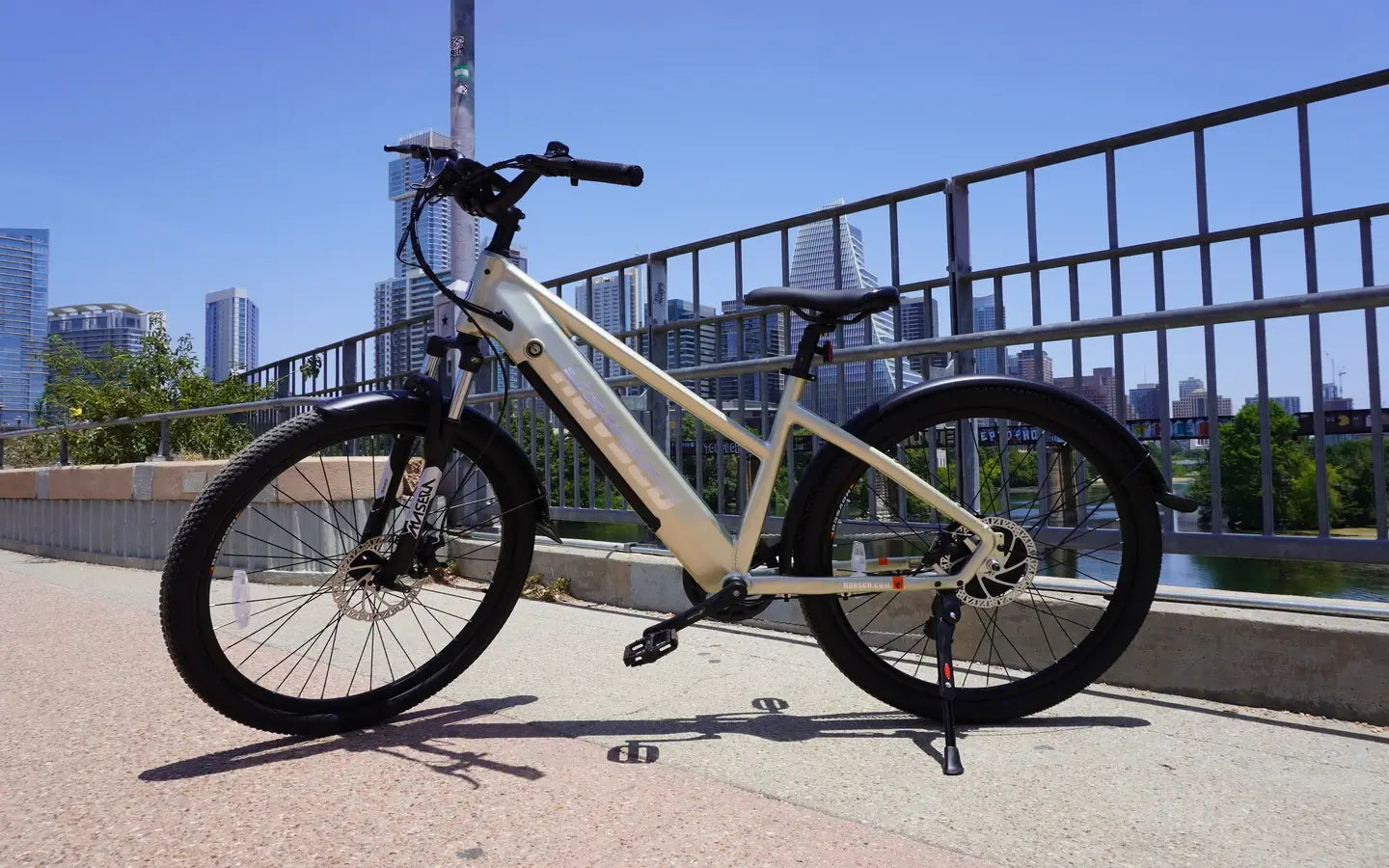
- by LiuJiazhu
How Durable Are Heavy-Duty Electric Cargo Bikes?
- by LiuJiazhu
Heavy-duty electric cargo bikes are engineered for exceptional durability, designed to withstand substantial loads, rough terrain, and frequent use over many years. Their reinforced frames, powerful motors, and robust components ensure long-lasting performance under demanding conditions, making them reliable workhorses for families and commercial users alike.
Durability in heavy-duty electric cargo bikes starts with the frame. These bikes typically feature reinforced aluminum or steel frames tested to rigorous standards like DIN 79010, which certifies cargo bikes for loads up to 250 kg (551 lbs). Welded joints, thick tubing, and modular cargo platforms distribute weight evenly, reducing stress points and preventing frame fatigue. Double-walled rims and torque-resistant spokes further enhance wheel strength to endure heavy loads and rough terrain.
Heavy-duty e-cargo bikes use mid-drive motors with high torque ratings (often 80-140 Nm) designed to handle heavy payloads without overheating. Thermal sensors and smart load-balancing protect motor longevity during hill climbs or extended rides. Batteries are typically high-capacity (48V 20Ah or more) and sometimes dual to ensure consistent power delivery and longer range. Proper motor and battery integration prevents premature wear and maintains reliable assistance under load.
Motor and Battery Durability Comparison Chart
| Feature | Heavy-Duty E-Cargo Bike | Standard E-Bike |
|---|---|---|
| Motor Torque (Nm) | 80 - 140 | 40 - 60 |
| Battery Capacity (Wh) | 960+ | 400 - 600 |
| Thermal Protection | Yes | Limited |
| Load Handling | Optimized | Not Designed for Heavy Loads |
Proper cargo positioning maintains bike balance and reduces frame stress. Heavy-duty cargo bikes center approximately 70% of the load between the axles to minimize torsion and prevent rollover risks. Rear racks are designed with triangulated support arms and weight limits to handle dynamic forces during turns. Incorrect loading, such as placing heavy items far behind the rear axle, can increase frame stress by up to 18% per kilogram and accelerate component wear.
Manufacturers employ rigorous testing protocols like the EFBE Tri-Test based on DIN 79010 standards. This involves multiple stress tests simulating real-world cargo loads, braking forces, and passenger weights. Frames and forks endure repeated high-force impacts to ensure structural integrity over the bike’s lifespan. Racks are tested not only for strength but also for stiffness to prevent sway under heavy loads, ensuring safe and comfortable rides.
Regular maintenance is vital for durability:
| Model Type | Frame Material | Load Capacity (kg) | Motor Power (W) | Battery Range (km) | Notable Durability Features |
|---|---|---|---|---|---|
| Premium Urban Hauler | Steel | 200+ | 1,400 | 130+ | Reinforced frame, dual batteries |
| Aluminum Workhorse | Aluminum | 180 | 750 | 80-100 | Torque-resistant spokes, thermal sensors |
| All-Terrain Utility | Chromoly Steel | 220 | 1,000 | 100+ | Heavy-duty suspension, wide tires |
When selecting a heavy-duty electric cargo bike, prioritize frames certified to DIN 79010 or equivalent standards for assured durability under heavy loads. Opt for mid-drive motors with high torque and thermal management to handle demanding rides. Look for robust battery systems with sufficient capacity for your typical range. Durable components such as hydraulic brakes, reinforced racks, and double-walled rims are essential. Brands like HOVSCO specialize in integrating these features to deliver reliable, long-lasting cargo e-bikes. Always consider after-sales support and warranty coverage for peace of mind.
"HOVSCO’s approach to heavy-duty electric cargo bikes focuses on harmonizing structural integrity with advanced motor technology. We emphasize welded frame joints and modular cargo solutions to withstand rigorous daily use. Our thermal sensor-equipped motors and smart battery management systems ensure longevity even under maximum payloads. Durability is not just a feature but a promise to our riders who depend on their bikes for family and business alike." — HOVSCO Engineering Lead
Q: Can heavy-duty electric cargo bikes last over 10 years?
A: Yes, with proper maintenance and quality components, these bikes can remain durable and reliable for a decade or more.
Q: Are mid-drive motors better for heavy cargo than hub motors?
A: Absolutely. Mid-drive motors provide better torque, reduce axle stress, and offer longer motor life under heavy loads.
Q: How important is frame certification like DIN 79010?
A: Very important. It guarantees the bike has passed rigorous tests for strength and safety under heavy cargo and passenger loads.
Q: What maintenance is critical for durability?
A: Regular inspection and tightening of bolts, brake servicing, drivetrain upkeep, and battery care are essential.
Q: Can I retrofit a standard e-bike for heavy cargo use?
A: No. Standard e-bikes lack the reinforced frames and components needed to safely carry heavy loads over time.
Share:
Why Use Electric Cargo Bikes For Urban Hauling?
Which Are the Best E Bikes 2025 for Every Rider’s Need?